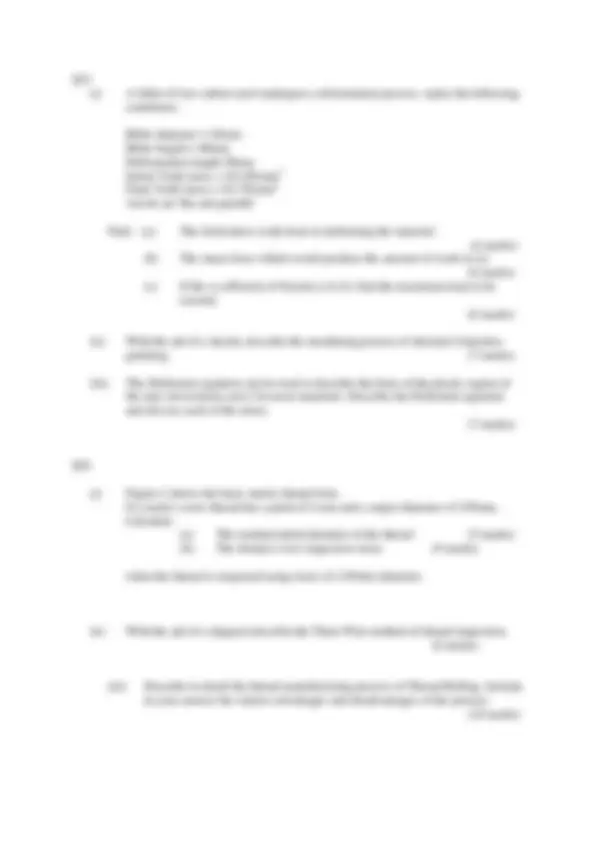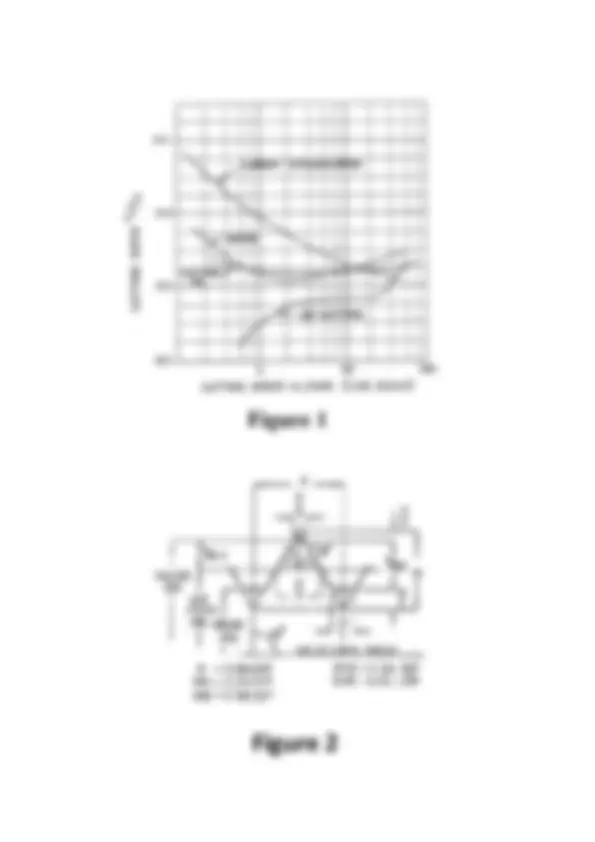




Study with the several resources on Docsity

Earn points by helping other students or get them with a premium plan


Prepare for your exams
Study with the several resources on Docsity

Earn points to download
Earn points by helping other students or get them with a premium plan
Community
Ask the community for help and clear up your study doubts
Discover the best universities in your country according to Docsity users
Free resources
Download our free guides on studying techniques, anxiety management strategies, and thesis advice from Docsity tutors
The instructions and questions for the manufacturing technology module exam held at the institute of technology, corcaí in summer 2011. The exam covers various topics including cnc turning, metal cutting tests, rolling mill configurations, forging dies, and thread manufacturing. Students are required to answer questions related to tool life calculation, merchant's force circle, rolling operation, cutting speed and cutting ratio, work done in deformation, and thread inspection.
Typology: Exams
1 / 4

This page cannot be seen from the preview
Don't miss anything!



INSTITUTE OF TECHNOLOGY
INSTITIÚID TEICNEOLAÍOCHTA CHORCAÍ
Semester 2 Examinations 2010/
Module Code: MECH
School: Mechanical & Process Engineering
Programme Title: Bachelor of Engineering (Hons)
Programme Code: EMECH_8_Y2 / EMECH_7_Y
External Examiner(s): Mr. John J. Hayes, Prof. Robin Clarke
Internal Examiner(s): Mr James Calvey
Instructions: Answer Question 1 and 2 other questions.
Duration: 2 hrs
Sitting: Summer 2011
Requirements for this examination:
Note to Candidates: Please check the Programme Title and the Module Title to ensure that you have received the correct examination paper. If in doubt please contact an Invigilator
Q1) Compulsory
(i) During a CNC lathe turning operation using CBN tools, the value of n is 0.2 and V 60 is 104m/min. A length of 50mm per component is being machined at a feed rate of 0.16mm/rev.
(a) At what speed should the spindle run to give a tool life of 6 hours? (2 marks) (b) What is the cutting time per piece? (3 marks) (c) How many pieces can be produced between tool changes? (3 marks)
(ii) During a metal cutting test under orthogonal conditions a lathe tool, rake angle 20 degrees, was used to machine the end of a steel pipe. The feed used was 0. mm/rev and the following data was obtained from the test:
T=2300N Fa=1000N Average cut chip thickness = 0.875mm
(a) Produce a fully labeled diagram of Merchants force circle describing the test conditions above. (7 marks)
If the pipe wall thickness was 3mm, determine
(b) Co-efficient of friction between chip and tool (6 marks) (c) The angle of inclination from the vertical of the shear plane (6 marks) (d) The shear stress on the shear plane (6 marks)
Q2) (i) Discuss the various types of rolling mill configurations in use in industry today. Include examples of typical applications of each configuration.
(8 marks)
(ii) Discuss the material properties that are necessary for the construction of Forging dies and list FIVE rules to be observed when designing dies. (8 marks)
(iii) During a rolling operation using a 1000 mm diameter roller on a 250mm thick steel plate, determine:- (a) Maximum reduction possible if cold rolled (4 marks) (b) Maximum reduction possible if hot rolled. (4 marks)
Note: Co-efficient of friction for cold rolling = 0. Co-efficient of friction for hot rolling =0.
(iv) Figure 1 shows the relationship between cutting speed and cutting ratio. Discuss the information represented making particular reference to how this information can be used to analyze the performance of various cutting fluids. (8 marks)